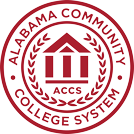MONTGOMERY – Three programs supported through the Alabama Department of Human Resources are addressing employment, child care and recidivism by way of Alabama’s community and technical colleges.
The Alabama DHR Youth Summer Employment Program, Child Care Training program and Transition to Employment program were announced Tuesday, April 23, at Trenholm State Community College. Each program aims to increase Alabama’s labor force participation and reduce residents’ dependency on state financial assistance programs.
Residents can contact their local adult education provider or ACCS DHR Project Director for more information.
The Summer Youth Employment program allows colleges within the Alabama Community College System (ACCS) to employ current, past and prospective students ages 16 to 24 for summer employment and on-the-job training opportunities. The program specifically aims to provide skill development opportunities for students in families whose income level is at or below 200% of the poverty level.
The Child Care Training program through Alabama’s Adult Education Division at ACCS provides citizens who are interested in working in child care with the core skills they need to compete for livable wage careers within child care.
The newest program, the Transition to Employment program, connects citizens who were previously incarcerated to sustainable wage jobs through a network of employers. Those employers are incentivized to give the employees a chance to use the credentials they earned through Ingram State Technical College, the state’s sole provider for prison education.
“DHR’s goal is to support residents in need to find opportunities and training allowing them to break the cycle of dependency and change the direction of their lives,” said Alabama DHR Commissioner Nancy Buckner. We could not accomplish this goal without a partner in the Alabama Community College System, which allows us to bring together academic and workforce education to help Alabamians have a strong foundation for their future.”
“The Alabama Community College System exists to provide opportunities that help residents beyond the classroom, and we’re able to do so with strong advocates to education and residents’ success like DHR,” said Jimmy H. Baker, Chancellor of the Alabama Community College System. We appreciate the trust invested in our ability to reach residents with the programs that impact their ability to reach their greatest success.”
Chardae Austin, a student coach at Wallace Selma Community College, said the college first participated in the summer work program in 2022. Since then, dozens of students have benefitted from the program.
“Students benefit in many ways, including the opportunity be on a college campus and become aware and prepared for their academic journey when they’re as young as 16,” she said. “They also get to see the ins and outs of how the college admission process works, the responsibilities of different departments, and how they fit in as a student. On top of these benefits, they’re earning a paycheck.”
ABOUT THE ACCS
Alabama’s community and technical colleges were merged into one system May 3, 1963, when legislators laid the groundwork for a unified system of institutions to focus on accessible training in “arts and sciences and in useful skills and trades” for current and future labor needs. Sixty years have passed, but that important cause remains the singular purpose of the Alabama Community College System (ACCS). With 24 community and technical colleges in more than 130 locations and an economic impact of $6.6 billion, the ACCS is Alabama’s gateway to first-class, affordable education and technical training to compete in a constantly evolving workforce. An estimated 155,000 Alabamians benefit from the various certification, credential, dual enrollment and degree programs the ACCS offers alongside leading industry partners. The System includes the Alabama Technology Network, which provides extensive training and service offerings directly to business and industry, and the ACCS Innovation Center, which provides rapid skills training through its Skills for Success program. The ACCS is governed by the Alabama Community College System Board of Trustees.
ABOUT ALABAMA DHR
The Alabama Department of Human Resources serves more than 1.4 million Alabamians each year through its six major programs. Alabama DHR traces its history back to the Department of Child Welfare, an agency created by the Legislature in 1919 to serve at-risk children and families. During the Great Depression in 1933, the department gained the additional responsibility of administering financial assistance to a struggling American public. In 1935 with the passage of the Social Security Act, the department and most of its duties were absorbed by the newly created Department of Public Welfare. In 1955, the department was renamed the Department of Pensions and Security. The current name was adopted in 1986. Some programs have changed over the years to meet the evolving needs of Alabama. However, the agency’s primary goal has always been and always will be to help people in need.
